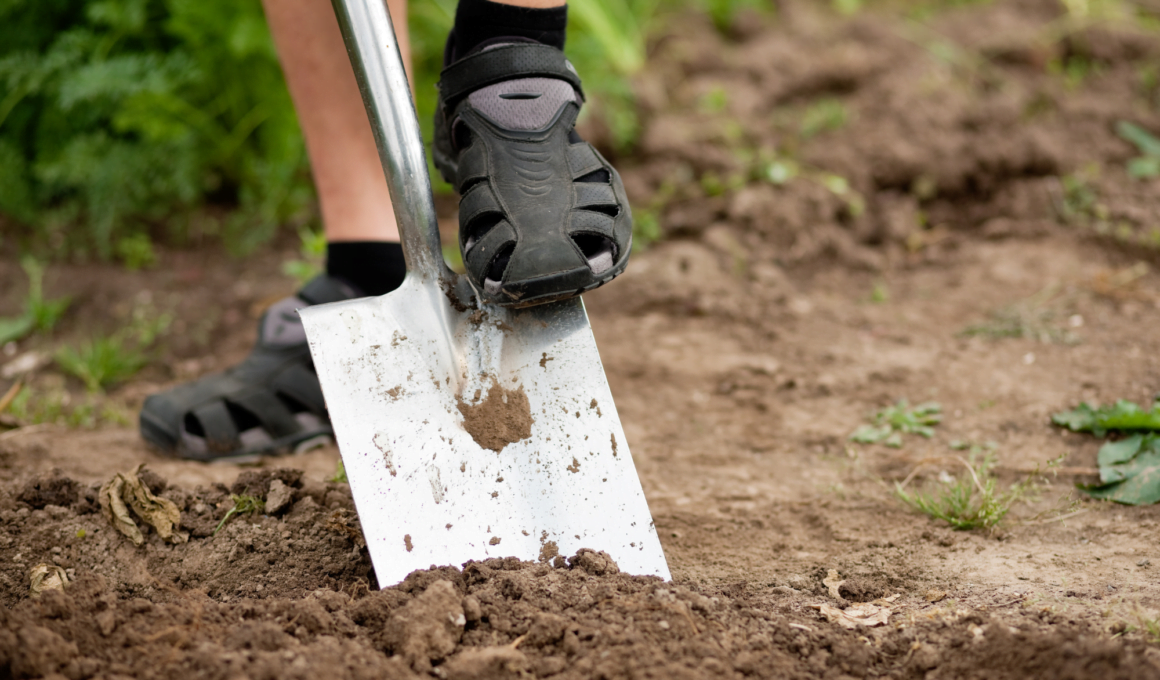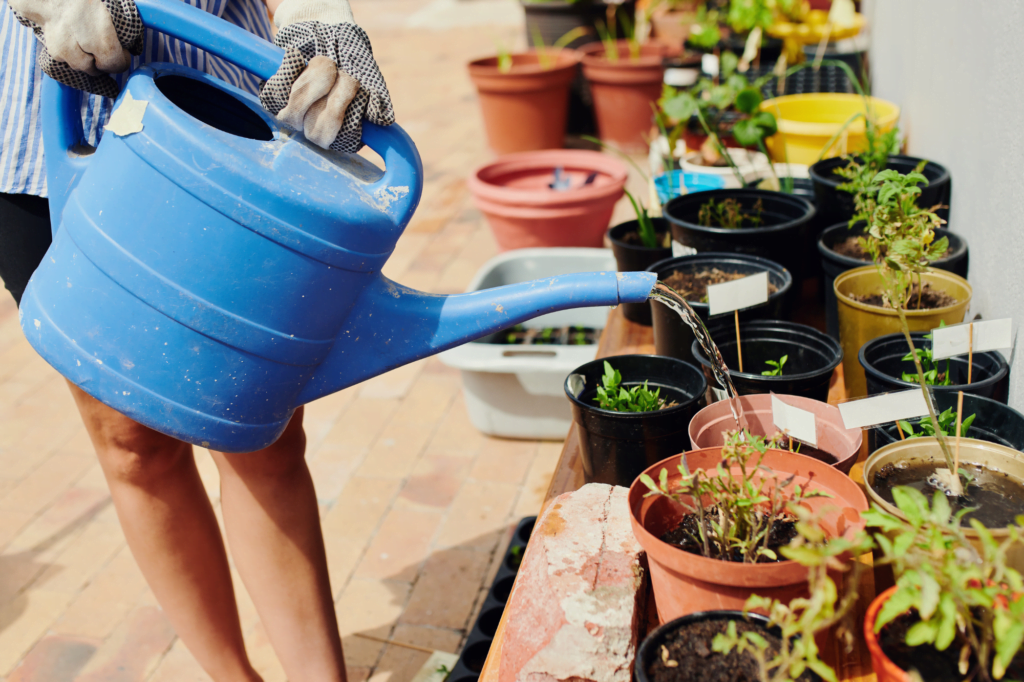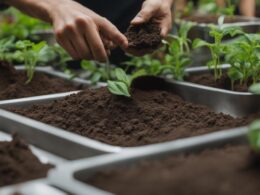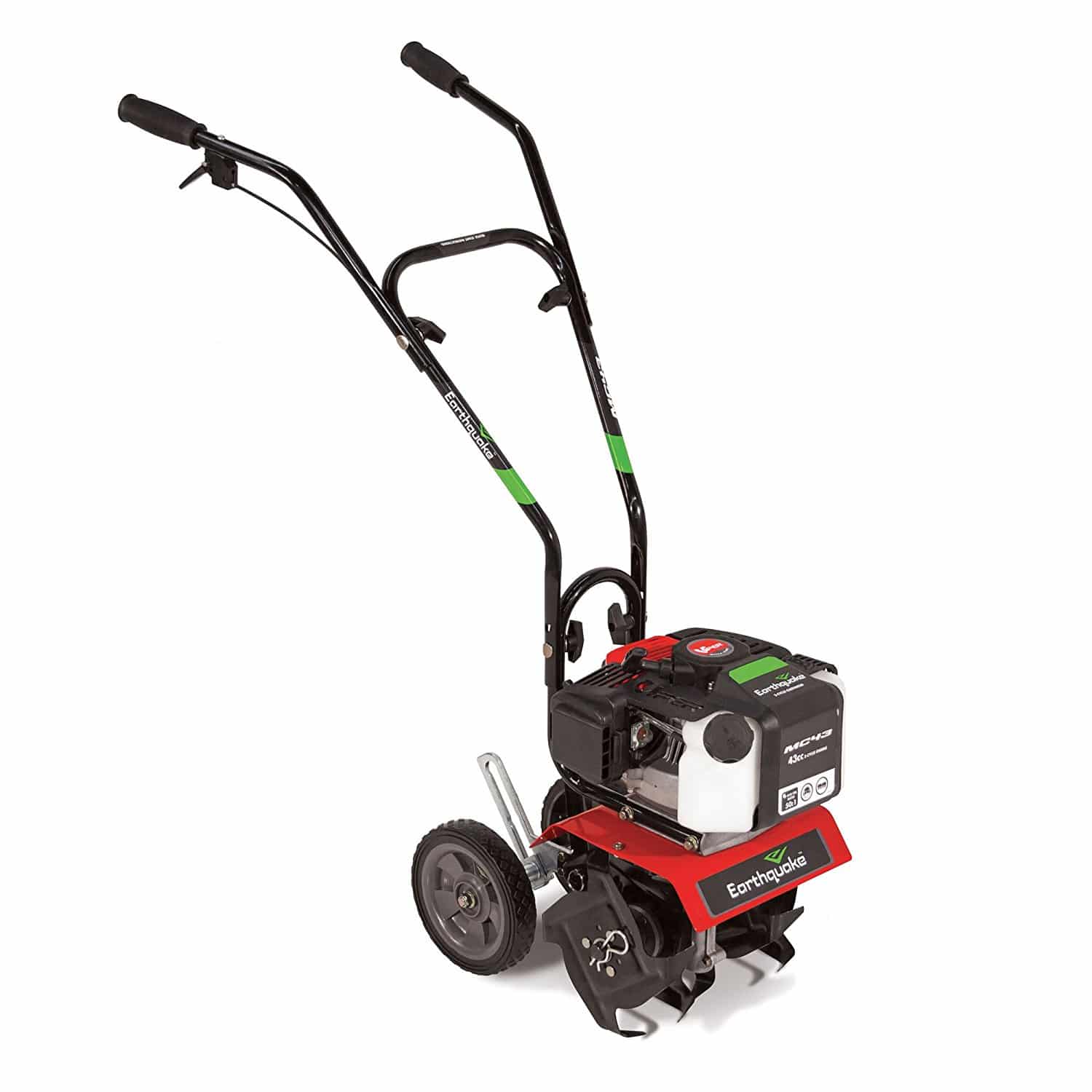Are you eager to make the most of your garden next spring? Then it’s time to start taking care of your soil over the winter!
By following a few simple steps, you can ensure that your garden soil is healthy, fertile, and ready for planting when the warmer weather arrives.
Testing your soil will help you understand its nutrient levels and pH, allowing you to make informed decisions about how to improve it.
Adding organic matter, such as compost or manure, will enhance its fertility, while mulching with organic materials will protect it from erosion and temperature fluctuations.
Planting winter cover crops will improve soil structure and prevent nutrient loss.
Remember to avoid overwatering and provide proper drainage to prevent root rot.
Frost blankets and row covers will safeguard your plants and soil from freezing temperatures.
Lastly, practicing crop rotation will help prevent pests and diseases from building up in your soil.
Follow these simple steps, and your garden soil will be in great shape come spring!
Quick Summary
- Test soil for nutrient levels and pH
- Add organic matter (compost, manure) for enhanced soil fertility
- Mulch with organic materials to protect against erosion and temperature fluctuations
- Plant winter cover crops for improved soil structure and nutrient retention
Soil Testing: Determine the nutrient levels and pH of your soil
Now that you’re ready to improve your garden soil over the winter, the first step is for you to test the nutrient levels and pH of your soil. This is important because it’ll help you determine which soil amendments you need to add to improve the quality of your soil.
Testing your soil will also give you an idea of its pH level, which is crucial for the health of your plants.
To start the testing process, you can purchase a soil testing kit from your local garden center or online. These kits are easy to use and come with instructions on how to collect soil samples and interpret the results.
When collecting the samples, make sure to take them from different areas of your garden to get an accurate representation of the overall soil quality.
Once you have your soil test results, you can determine the specific amendments your soil needs. For example, if your soil has low levels of nutrients, you can add organic matter such as compost or manure to enrich it. If the pH of your soil is too high or too low, you can adjust it by adding lime or sulfur respectively.
By testing your soil and making the necessary amendments, you can ensure that your garden soil is in optimal condition for planting in the spring. This will not only improve the health and productivity of your plants but also create a safe environment for them to thrive. Remember, healthy soil leads to healthy plants!
Add Organic Matter: Incorporate compost, manure, or leaf mulch to enhance soil fertility
Additionally, incorporating compost, manure, or leaf mulch into your garden can significantly enrich the fertility of your soil. Composting is a great way to recycle organic waste from your kitchen and yard into nutrient-rich soil amendment. It not only improves the soil structure but also provides essential nutrients that plants need to thrive. When it comes to composting, there are a few tips to keep in mind for safety and effectiveness.
First, it is important to have a good balance of green and brown materials in your compost pile. Green materials, such as vegetable scraps and grass clippings, provide nitrogen, while brown materials, like dry leaves and straw, add carbon. This balance ensures proper decomposition and prevents unpleasant odors.
Second, make sure to turn your compost pile regularly to promote airflow and speed up the decomposition process. This also helps to prevent the growth of harmful bacteria.
Lastly, consider using different types of organic mulches, such as straw, wood chips, or shredded leaves, to cover the soil surface around your plants. Mulching helps retain moisture, suppress weed growth, and regulate soil temperature.
Incorporating compost and organic mulch into your garden not only enhances soil fertility but also promotes a safe and sustainable gardening practice. By following these composting tips and using various types of organic mulch, you can create a healthy and flourishing garden.
Mulching: Apply a layer of organic mulch to protect the soil from erosion and temperature fluctuations
To protect your soil from erosion and maintain stable temperatures, you should apply a layer of organic mulch. Mulching is an essential step in improving your garden soil over the winter and ensuring its health and productivity.
By adding a protective barrier, you can prevent erosion caused by heavy rainfall or strong winds. This will keep your soil intact, preventing it from washing away and leaving your plants vulnerable.
In addition to erosion control, mulching also helps regulate the temperature of your soil. During the winter months, the ground can experience extreme temperature fluctuations, which can be harmful to plants. Organic mulch acts as insulation, providing a buffer against these temperature changes. It keeps the soil warmer when it’s cold outside and cooler when it’s hot. This stability is crucial for the well-being of your plants, as it allows their roots to thrive without being exposed to extreme conditions.
When applying organic mulch, make sure to spread it evenly around your garden. Aim for a layer that is about 2-3 inches thick. This will provide adequate protection without smothering your plants. As the mulch breaks down over time, it will also add valuable organic matter to the soil, further enhancing its fertility.
So, take the necessary steps to safeguard your soil from erosion and temperature fluctuations by applying a layer of organic mulch. Your garden will thank you for it.
Cover Crops: Plant winter cover crops to improve soil structure and prevent nutrient loss
Planting winter cover crops is a fantastic way to enhance the structure of your soil and protect against nutrient loss. Winter gardening is all about preparing your garden for the upcoming growing season, and cover crops are an essential part of that process.
Here are three reasons why you should consider planting winter cover crops:
- They prevent erosion: Winter weather can be harsh, and heavy rains or snow can cause soil erosion. By planting cover crops, you create a protective layer that prevents soil from being washed away, keeping your garden safe.
- They improve soil structure: Cover crops, also known as green manure, add organic matter to the soil. As these crops decompose over the winter, they release nutrients into the soil and improve its structure. This helps create a healthy environment for your plants to thrive in.
- They suppress weeds: Winter cover crops compete with weeds for space, light, and nutrients, effectively suppressing their growth. This means fewer weeds to deal with when spring arrives, making your gardening experience safer and more enjoyable.
To maximize the benefits of winter cover crops, choose varieties that are suitable for your climate and soil type. Some common cover crops include winter rye, crimson clover, and hairy vetch. So, get started on planting your winter cover crops and watch your garden soil improve over the winter months.
Avoid Overwatering: Prevent waterlogging and root rot by ensuring proper drainage
Avoiding overwatering is crucial for maintaining healthy plants and preventing waterlogging and root rot, so it’s important to ensure proper drainage in your garden.
Waterlogged soil can suffocate plant roots, leading to stunted growth and even plant death. To prevent waterlogging and promote drainage, follow these simple steps:
- Evaluate your garden’s drainage: Observe how water drains after rainfall or irrigation. If you notice puddles or standing water that takes a long time to disappear, it’s a sign of poor drainage. Consider making necessary adjustments to improve it.
- Amend the soil: Incorporate organic matter like compost or well-rotted manure into the soil. This helps improve its structure, allowing for better water movement and drainage.
- Raise garden beds or create raised areas: By elevating your planting beds, excess water can drain more efficiently. This can be done by adding soil to create a mound or using raised garden beds.
Remember, it’s essential to strike a balance when watering your garden. It’s better to water deeply and less frequently than to water shallowly and often. Always check the moisture level of the soil before watering to avoid overwatering. By preventing waterlogging and promoting drainage, you can ensure the health and safety of your plants throughout the winter.
| Pros | Cons | Emotion |
|---|---|---|
| Prevents root rot | Requires effort | Safety |
| Healthy plants | Time-consuming | Peace of mind |
| Better water flow | Possible expenses | Confidence |
Protect from Frost: Use frost blankets or row covers to safeguard plants and soil from freezing temperatures
Protect your plants and soil from freezing temperatures by using frost blankets or row covers. Frost protection is crucial for winter gardening, as it helps safeguard your plants and soil against the detrimental effects of extreme cold.
When temperatures drop below freezing, frost can damage the tissues of your plants, leading to stunted growth or even death. Additionally, frost can cause the soil to freeze, resulting in reduced nutrient availability and impaired root development.
Frost blankets and row covers act as a shield, creating a microclimate that traps heat and prevents frost from forming on your plants and soil. These protective covers are made from materials such as polypropylene or breathable fabric, allowing light and moisture to reach your plants while still providing insulation.
When installing frost blankets or row covers, make sure they are securely anchored to prevent them from blowing away in strong winds.
To provide maximum protection, cover your plants and soil before the first frost of the season. Monitor the weather forecast regularly to anticipate freezing temperatures and be prepared to cover your garden overnight. Remember to remove the covers during the day to allow sunlight and air circulation.
By taking these precautions and using frost protection, you can ensure the safety and well-being of your plants and soil throughout the winter months.
Avoid Heavy Foot Traffic: Minimize soil compaction by avoiding unnecessary walking or machinery use
To minimize soil compaction and keep your garden thriving, be mindful of heavy foot traffic and refrain from unnecessary walking or using machinery. Soil compaction occurs when the soil particles are pressed together, reducing pore space and limiting the movement of air, water, and nutrients. This can result in poor root growth and decreased plant health. By avoiding heavy foot traffic, you can protect the soil and maintain its structure and fertility.
Imagine your garden soil as a delicate ecosystem that needs to breathe and absorb nutrients. Just like you wouldn’t want to trample on a delicate flower, you should also be cautious about stepping on your garden soil unnecessarily. To help you understand the importance of avoiding heavy foot traffic, let’s compare it to walking on a sponge versus walking on concrete. When you step on a sponge, it absorbs your weight and bounces back, but when you step on concrete, your weight compresses the surface and leaves no room for movement. The same principle applies to your garden soil.
By minimizing compaction and protecting the soil, you are creating a healthy environment for your plants to thrive. So next time you’re in the garden, remember to tread lightly and be mindful of where you walk.
Practice Crop Rotation: Rotate your crops to prevent the buildup of pests and diseases in the soil
By practicing crop rotation, you can keep pests and diseases at bay, ensuring a healthier and more vibrant garden. Crop rotation is a simple but effective technique that involves changing the location of your crops each year. This helps to prevent the buildup of pests and diseases in the soil, as different plants attract different types of pests and diseases.
To practice crop rotation, start by dividing your garden into different sections or beds. Each year, choose a different section to plant your crops. This will help disrupt the life cycle of pests and make it more difficult for them to establish themselves in the soil. Additionally, rotating crops can help improve soil fertility, as different plants have different nutrient needs and can replenish the soil with the nutrients they require.
When selecting crops for rotation, it’s important to choose plants that aren’t closely related to each other, as pests and diseases often target specific plant families. For example, if you grow tomatoes in one section of your garden one year, avoid planting any related plants, such as peppers or eggplants, in that section the following year. Instead, choose plants from a different family, such as leafy greens or legumes.
In addition to crop rotation, incorporating pest control measures can further protect your garden from pests and diseases. Consider using organic pest control methods, such as companion planting or natural predators, to minimize the need for chemical pesticides. Regularly inspect your plants for any signs of pests or diseases and take action immediately to prevent the spread.
By practicing crop rotation and implementing pest control measures, you can ensure a thriving garden that’s free from harmful pests and diseases. Happy gardening!
Frequently Asked Questions
How often should I test my garden soil for nutrient levels and pH?
To ensure optimal nutrient levels and pH in your garden soil, it is recommended to test it regularly. You should test the soil at least once a year for nutrient levels and pH. There are alternative methods available, but testing provides the most accurate results for safety.
What is the best type of organic matter to add to my garden soil?
The best sources of organic matter to add to your garden soil include compost, well-rotted manure, and leaf mold. These materials improve soil structure, enhance nutrient retention, and promote beneficial microbial activity, ensuring a healthy and safe environment for your plants.
How thick should the layer of organic mulch be?
To ensure the safety of your garden, it is recommended to apply a layer of organic mulch that is around 2-4 inches thick. This helps to retain moisture, suppress weeds, and regulate soil temperature.
What are some examples of winter cover crops that I can plant?
To improve your garden soil over the winter, plant winter cover crops like hairy vetch, crimson clover, or winter rye. These examples of cover crops can benefit your soil by preventing erosion, adding nutrients, and suppressing weeds.
How can I improve drainage in my garden to prevent waterlogging?
To improve drainage in your garden and prevent waterlogging, add organic matter like compost or well-rotted manure to your soil. These garden soil amendments will improve soil fertility and create a healthier growing environment.
Conclusion
In conclusion, improving your garden soil over the winter is crucial for a successful growing season. By following these steps, you can enhance soil fertility, prevent nutrient loss, and protect your plants and soil from freezing temperatures and erosion.
Remember to regularly test your soil, add organic matter, use mulch and cover crops, avoid overwatering and compaction, and practice crop rotation.
With these strategies, you’ll have healthy and thriving plants in your garden come springtime. Happy gardening!










